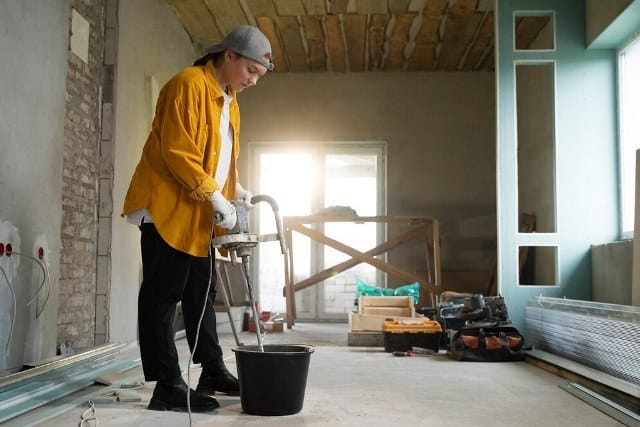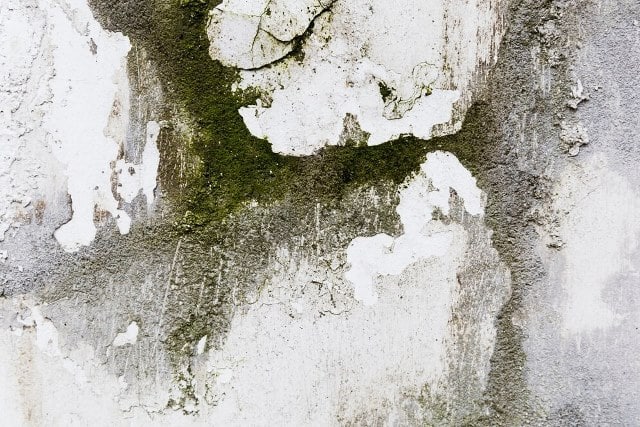Proper drainage is essential to maintaining a stable and healthy home environment. In Philadelphia, heavy rainfall, clay-rich soil, and fluctuating temperatures can accumulate significant water around and beneath homes.
Water seeping into basements due to poor drainage can result in various issues. This includes structural damage and health dangers from mold and mildew.
One safeguard against water seeping into the interior regions of your home is basement waterproofing.
Various tools and methods, such as sealants, drainage systems, and insulation, are employed to establish a barrier against moisture.
Addressing poor drainage with waterproofing is essential to protecting your home’s foundation and interior from the damaging effects of water intrusion. This should be done as soon as you start noticing its signs.
But how do you identify these signs? Here’s how to understand if your Philadelphia basement requires waterproofing to maintain a dry, safe, healthy living environment.

Sign 1: Visible Water Stains
Heavy rains and floods are common challenges in Philadelphia and may significantly impact basements. One of the most prominent indicators is the presence of visible water stains on basement walls or floors.
Moisture seeps from your basement and is absorbed by the walls and floor of your home. Water stains on the walls and floors are often discolored spots or streaks. They are the result of water leaking through foundation fissures or gaps.
Water stains are a sign of continuous water intrusion, which, over time, can erode your home’s structural integrity. To stop further damage and the spread of mold, it is imperative that the moisture be removed as soon as possible. If you live in a metropolis and need to act quickly, you can get advice from Basement Waterproofing Scientists, a basement waterproofing solution provider in Philadelphia.
Sign 2: Musty Odors
With dampness comes a musty odor that permeates your basement. Not only are these odors unpleasant, but they also signify a serious moisture problem. Mold and mildew development, which thrive in basements’ moist, confined environments, is usually the source of musty odors.
Research has shown a clear link between exposure to mold spores for a long time and developing respiratory problems like allergies and asthma.
Making sure your home is adequately waterproofed is essential for keeping your family healthy. Preventing moisture from seeping in helps lower the chances of mold issues and improves the overall quality of your living space.

Sign 3: Efflorescence
Efflorescence is another indication that the eye can observe easily. When concrete’s water-soluble salts evaporate and leave behind a white, powdery residue, it’s known as efflorescence. This is a sign of moisture leakage in the basement floor and walls through porous materials like concrete.
The structural integrity of your basement depends on the timely identification of the underlying moisture source. Resolving this issue prevents additional degradation of building components.
Sign 4: Cracks in Walls or Floor
The foundation may eventually break as a result of water weakening it. A prominent indicator of foundation movement in a basement is the presence of cracks in the walls or flooring, which can allow water to ingress.
The breaches can get worse due to the hydrostatic pressure from groundwater, which can lead to more water getting in and damaging the structure.
Over time, ignored fissures may weaken your home’s structural integrity and need expensive fixes. To keep your property structurally sound, sealing cracks and addressing underlying waterproofing concerns are crucial first measures. Taking these steps will help avoid damage later.
Sign 5: Peeling Paint or Wallpaper
Once the wall paint or wallpaper starts to peel, it is a clear sign your basement needs waterproofing. This is because the walls of a building absorb water leaking from a wet basement.
Painting may bubble, fracture, or peel as a result of water seeping through walls, detracting from the beauty of your house.
Moisture can cause significant harm to construction materials, making it critical to detect any underlying waterproofing problems quickly. Addressing these issues helps prevent further damage.
Addressing these problems keeps your basement looking better while safeguarding the walls’ structural integrity. This also helps avert future damage and expensive repairs.

Sign 6: Rust or Corrosion
Metals and concrete, both heavily susceptible to damage from excessive moisture, are your home’s building materials. A sure sign of too much moisture in your basement is rust or corrosion on metal fixtures like pipes or support beams.
If you see rust on the metal parts of your home, it means that the foundation of the house is being weakened by water in the basement. This calls for quick action and the basement waterproofing of your house.
Sign 7: High Humidity Levels
Basements are inherently more humid because of their underground position and inadequate ventilation. Problems such as musty smells, mold development, and poor indoor air quality are strongly influenced by elevated humidity levels.
Health risks like respiratory issues and allergies can result from mold growth due to wet basements. Therefore, it is essential to include adequate waterproofing, dehumidification with units like air conditioners or humidifiers, and proper ventilation.
Sign 8: Water Accumulation Around Foundation
If you notice water pooling around the outside of your foundation, it’s a clear sign that your basement might need waterproofing.
A basement’s foundation can be penetrated by water seeping in due to poor drainage, which, over time, can make the situation worse. Water can seep into your home structure and form cracks due to the pressure from standing water. It’s vital to waterproof your basement properly and make sure you have good drainage to prevent these problems.
Water buildup should be addressed as soon as possible to avoid structural damage to your basement. This will help maintain a dry and safe environment for your family.
Wrapping Up
It’s essential to keep your basement dry and safe so that your home stays healthy, especially in Philadelphia’s weather. You might need to waterproof your basement if you see signs like water stains, odor, and cracks on the walls.
Addressing these signs can prevent structural damage and health risks associated with moisture.
Don’t wait until the problems escalate—act now to protect your investment and enhance the comfort and safety of your home.


